NVIDIA’s GeForce GTX 480 and GTX 470: 6 Months Late, Was It Worth the Wait?
by Ryan Smith on March 26, 2010 7:00 PM EST- Posted in
- GPUs
Image Quality & AA
When it comes to image quality, the big news from NVIDIA for Fermi is what NVIDIA has done in terms of anti-aliasing of fake geometry such as billboards. For dealing with such fake geometry, Fermi has several new tricks.
The first is the ability to use coverage samples from CSAA to do additional sampling of billboards that allow Alpha To Coverage sampling to fake anti-alias the fake geometry. With the additional samples afforded by CSAA in this mode, the Fermi can generate additional transparency levels that allow the billboards to better blend in as properly anti-aliased geometry would.
The second change is a new CSAA mode: 32x. 32x is designed to go hand-in-hand with the CSAA Alpha To Coverage changes by generating an additional 8 coverage samples over 16xQ mode for a total of 32 samples and giving a total of 63 possible levels of transparency on fake geometry using Alpha To Coverage.
In practice these first two changes haven’t had the effect we were hoping for. Coming from CES we thought this would greatly improve NVIDIA’s ability to anti-alias fake geometry using cheap multisampling techniques, but apparently Age of Conan is really the only game that greatly benefits from this. The ultimate solution is for more developers of DX10+ applications to enable Alpha To Coverage so that anyone’s MSAA hardware can anti-alias their fake geometry, but we’re not there yet.
So it’s the third and final change that’s the most interesting. NVIDIA has added a new Transparency Supersampling (TrSS) mode for Fermi (ed: and GT240) that picks up where the old one left off. Their previous TrSS mode only worked on DX9 titles, which meant that users had few choices for anti-aliasing fake geometry under DX10 games. This new TrSS mode works under DX10, it’s as simple as that.
So why is this a big deal? Because a lot of DX10 games have bad aliasing of fake geometry, including some very popular ones. Under Crysis in DX10 mode for example you can’t currently anti-alias the foliage, and even brand-new games such as Battlefield: Bad Company 2 suffer from aliasing. NVIDIA’s new TrSS mode fixes all of this.

Bad Company 2 DX11 Without Transparency Supersampling
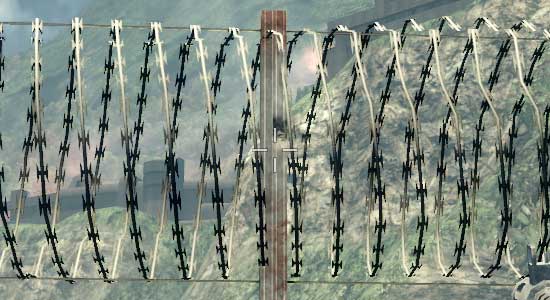
Bad Company 2 DX11 With Transparency Supersampling
The bad news is that it’s not quite complete. Oh as you’ll see in our screenshots it works, but the performance hit is severe. It’s currently super-sampling too much, resulting in massive performance drops. NVIDIA is telling us that this should be fixed next month, at which time the performance hit should be similar to that of the old TrSS mode under DX9. We’ve gone ahead and taken screenshots and benchmarks of the current implementation, but keep in mind that performance should be greatly improving next month.
So with that said, let’s look at the screenshots.

| NVIDIA GeForce GTX 480 | NVIDIA GeForce GTX 285 | ATI Radeon HD 5870 | ATI Radeon HD 4890 |
| 0x | 0x | 0x | 0x |
| 2x | 2x | 2x | 2x |
| 4x | 4x | 4x | 4x |
| 8xQ | 8xQ | 8x | 8x |
| 16xQ | 16xQ | DX9: 4x | DX9: 4x |
| 32x | DX9: 4x | DX9: 4x + AAA | DX9: 4x + AAA |
| 4x + TrSS 4x | DX9: 4x + TrSS | DX9: 4x + SSAA | |
| DX9: 4x | |||
| DX9: 4x + TrSS |
With the exception of NVIDIA’s new TrSS mode, very little has changed. Under DX10 all of the cards produce a very similar image. Furthermore once you reach 4x MSAA, each card producing a near-perfect image. NVIDIA’s new TrSS mode is the only standout for DX10.
We’ve also include a few DX9 shots, although we are in the process of moving away from DX9. This allows us to showcase NVIDIA’s old TrSS mode, along with AMD’s Adapative AA and Super-Sample AA modes. Note how both TrSS and AAA do a solid job of anti-aliasing the foliage, which makes it all the more a shame that they haven’t been available under DX10.
When it comes to performance, keep in mind that both AMD and NVIDIA have been trying to improve their 8x MSAA performance. When we reviewed the Radeon 5870 back in September we found that AMD’s 8x MSAA performance was virtually unchanged, and 6 months later that still holds true. The performance hit moving from 4x MSAA to 8x MSAA on both Radeon cards is roughly 13%. NVIDIA on the other hand took a stiffer penalty under DX10 for the GTX 285, where there it fell by 25%. But now with NVIDIA’s 8x MSAA performance improvements for Fermi, that gap has been closed. The performance penalty for moving to 8x MSAA over 4x MSAA is only 12%, putting it right up there with the Radeon cards in this respect. With the GTX 480, NVIDIA can now do 8x MSAA for as cheap as AMD has been able to
Meanwhile we can see the significant performance hit on the GTX 480 for enabling the new TrSS mode under DX10. If NVIDIA really can improve the performance of this mode to near-DX9 levels, then they are going to have a very interesting AA option on their hands.
Last but not least, there’s anisotropic filtering quality. With the Radeon 5870 we saw AMD implement true angle-independent AF and we’ve been wondering whether we would see this from NVIDIA. The answer is no: NVIDIA’s AF quality remains unchanged from the GTX200 series. In this case that’s not necessarily a bad thing; NVIDIA already had great AF even if it was angle-dependant. More to the point, we have yet to find a game where the difference between AMD and NVIDIA’s AF modes have been noticeable; so technically AMD’s AF modes are better, but it’s not enough that it makes a practical difference
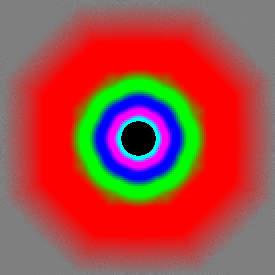
GeForce GTX 480

GeForce GTX 285
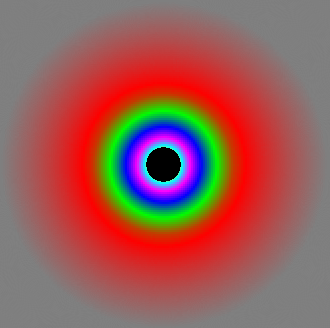
Radeon 5870


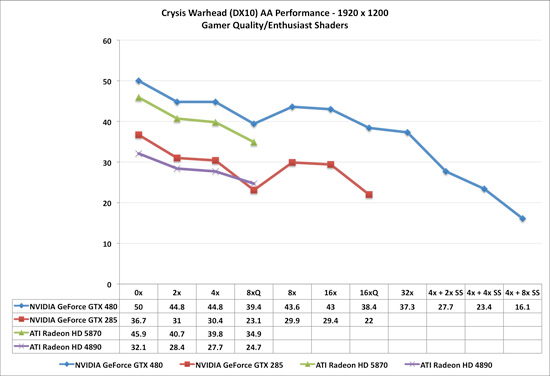
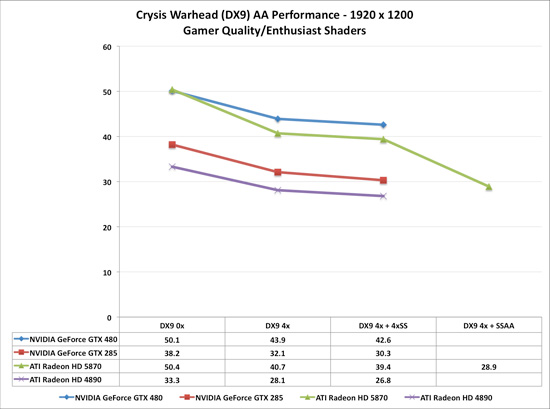








196 Comments
View All Comments
kc77 - Saturday, March 27, 2010 - link
Yeah I mentioned it too. ATI got reamed for almost a whole entire page for something that didn't really happen. While this review mentions it in passing almost like it's a feature.gigahertz20 - Friday, March 26, 2010 - link
"The price gap between it and the Radeon 5870 is well above the current performance gap"Bingo, Nvidia may have the fastest single GPU out now, but not by much, and there are tons of trade offs for just a little bit more FPS over the Radeon 5870. High heat/noise/power for what? Over 90% of gamers play at 1920 X 1200 resolution or less, so even just a Radeon 5850 or Crossfired 5770's are the best bang for the buck.
If all your going to play at is 1920 X 1200 or less, I see no reason why educated people would want to buy a GTX 470/480 after reading all the reviews for Fermi today. Way to expensive and way to hot for not much of a performance gain, maybe it's time to sell my Nvidia stock before it goes down any further over the next year or so.
ImSpartacus - Friday, March 26, 2010 - link
"with a 5th one saying within the card"Page 2, Paragraph 2.
Aside from minor typos, this is a great article.
cordis - Friday, March 26, 2010 - link
Hey, thanks for the folding data, very much appreciated. Although, if there's any way you can translate it into something that folders are a little more used to, like ppd (points per day), that would be even better. I'm not sure what the benchmarking program you used is like, but if it folds things and produces log files, it should be possible to get ppd. From the ratios, it looks like above 30kppd, but it would be great to get hard numbers on it. Any chance of that getting added?Ryan Smith - Friday, March 26, 2010 - link
I can post the log files if you want, but there's no PPD data in them. It only tells me nodes.cordis - Tuesday, March 30, 2010 - link
Eh, that's ok, if you want to that's fine, but don't worry about it too much, it sounds like it was an artificial nvidia thing. We'll have to wait for people to really start folding on them to see how they work out.ciparis - Friday, March 26, 2010 - link
I had a weird malware warning pop up when I hit page 2:"The website at anandtech.com contains elements from the site googleanalyticz.com"
I'm using Safari (I also saw someone with Chrome report it). I wonder what that was all about...
Despoiler - Friday, March 26, 2010 - link
I'd like to see some overclocking benchmarks given the small die vs big die design decisions each company made.All in all ATI has this round in the business sense. The performance crown is not where the money is. ATI out executed Nvidia in a huge way. I cannot wait to see the financial results for each company.
LuxZg - Saturday, March 27, 2010 - link
Agree.. No overclocking at all..feels like big part of review missing. With GTX480 having that high consumption/temperatures, I doubt it would go much further, at least on air. On the other hand, there are already many OCed HD58xx cards out there, and even those can easily be overclocked further. With as much watts of advantage, I think AMD could easily catch up with GTX480 and still be a bit cooler and less power hungry. And less noisy as a consequence as well of course.randfee - Friday, March 26, 2010 - link
very thorough test as expected from you guys, thanks... BUT:Why on earth do you keep using an arguably outdated core i7 920 for benchmarking the newest GPUs? Even at 3,33GHz its no match for an overclocked 860, a comman highend gaming-rig cpu these days. I got mine at 4,2GHz air cooled?!
sorry... don't get it. On any GPU review I'd try to eliminate any possible bottleneck so the GPU gets limited more, why use an old cpu like this?!
anyone?